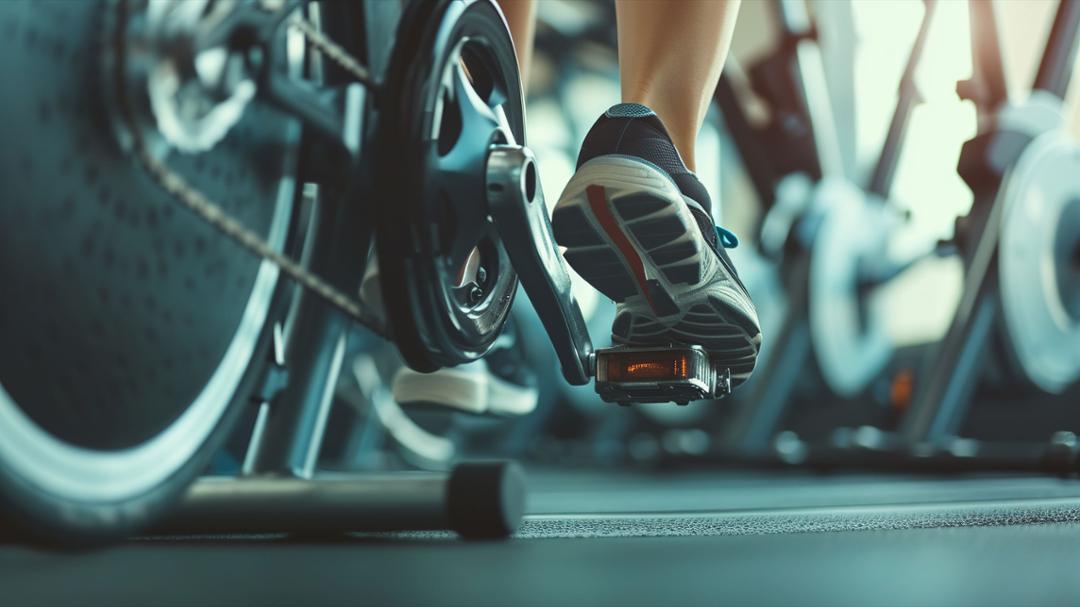The rising department is a key contributor to Texas Tech’s apparatus with Angela Lumpkin at the helm.
The Department of Kinesiology & Sport Management is virtually unrecognizable today compared to 10 years ago.
Joaquin Gonzales, an associate professor of kinesiology who started at Texas Tech University in 2010, described the department as in a state of flux prior to the arrival of current chair Angela Lumpkin.
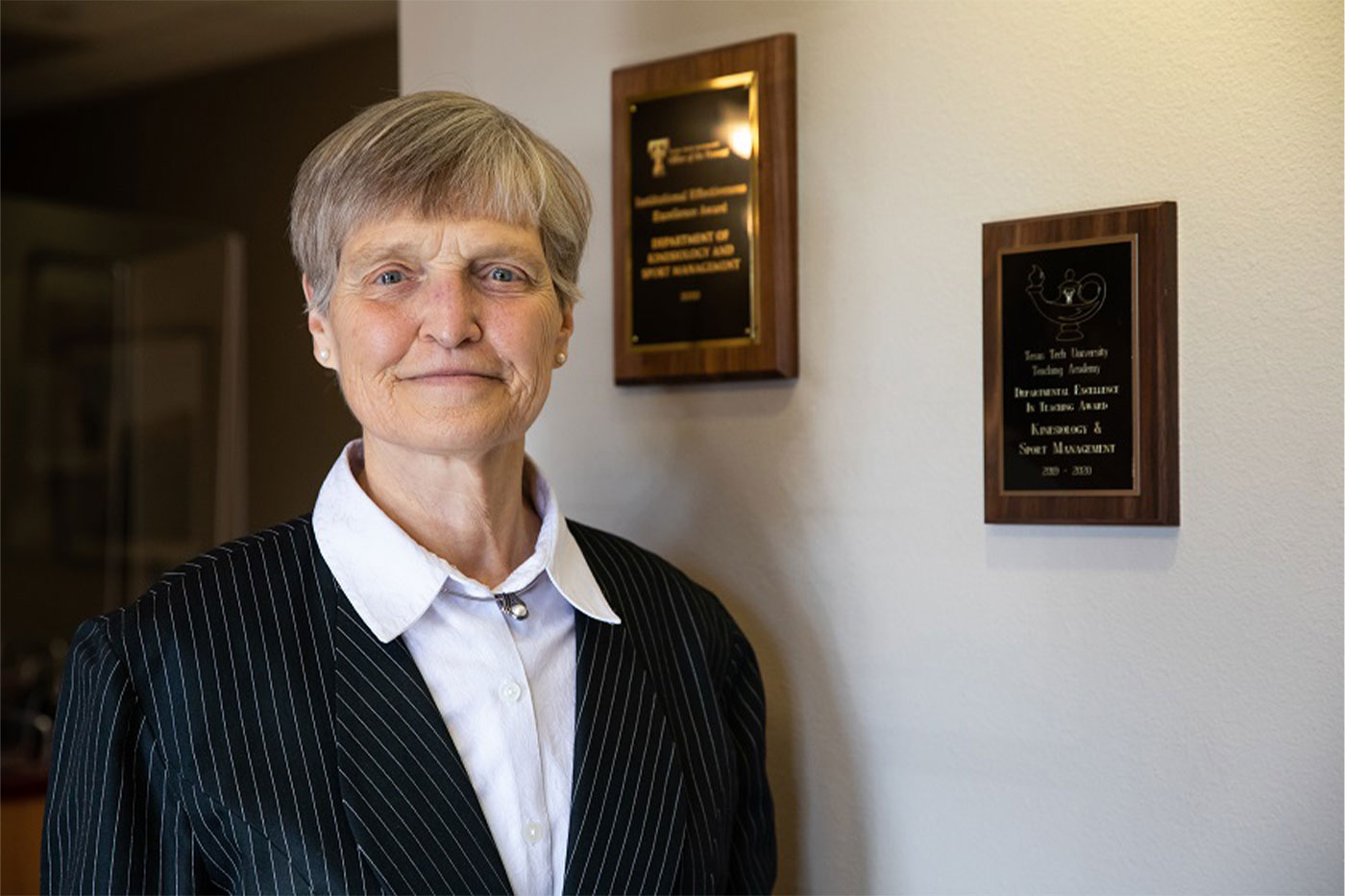
Faculty at the then-Department of Health, Exercise & Sport Sciences had seen two interim chairs and one full-time chair between 2010 and 2014.
“For those faculty, her arrival was really a welcome change, to have somebody that we felt was going to be there for a long period of time,” he said of Lumpkin. “We really needed somebody to fill that role in a more stable and permanent position.”
Much more of the department needed rectifying, Gonzales remembers, to clarify what curriculum and degrees were available and to encourage faculty retention.
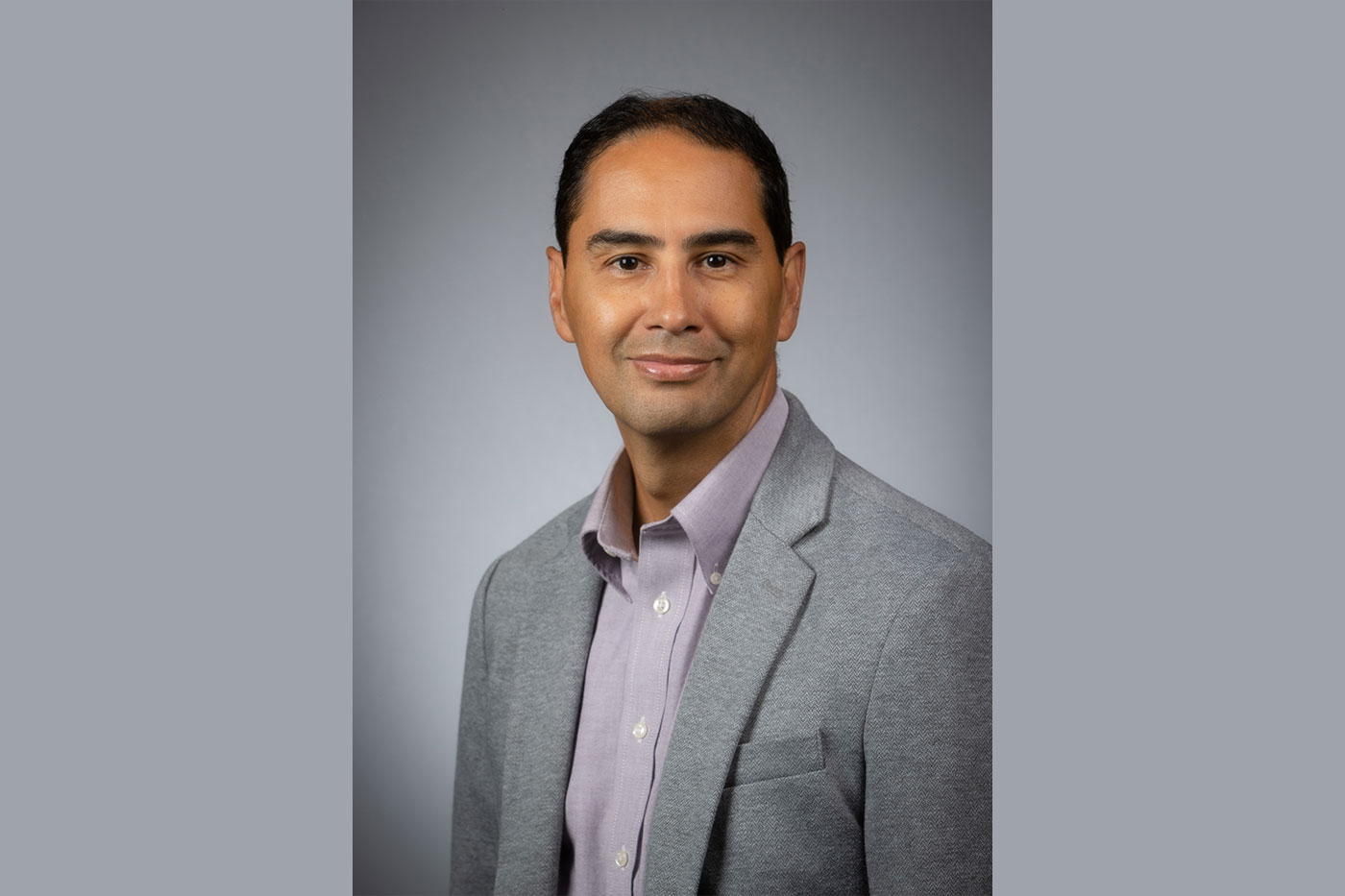
Gonzales, who came to Texas Tech to earn his master’s degree in exercise and sports science, recalls students had no way to determine what degrees they could earn by looking at the name alone.
Soon after Lumpkin arrived, she asked the faculty to vote on a name change more consistent with the degrees offered. Lumpkin also directed the department away from what she described as trying to do too much with too few faculty.
“We had an interest in building out our undergraduate majors, whatever that looked like, and we wanted to change it to keep up to where the fields were going,” she said. “A lot of Exercise & Sport Sciences programs no longer exist, because it shoved together a whole potpourri of different areas as the fields changed.”
No longer did the department offer a health and fitness track, physical education, or exercise science, with the latter changed to a kinesiology major that is now one of the more popular majors on campus. It also earned approval from the Texas Higher Education Coordinating Board to add a Bachelor of Science and Master of Science in Sport Management.
Those revisions happened early in Lumpkin’s tenure, requiring a shift in curriculum as courses were dropped and added and totaling roughly 300 changes. Naturally, the composition of faculty also changed.
Four faculty, including Gonzales, have remained in the department since 2014.
Grant Tinsley, an associate professor of kinesiology, joined the department in 2016. Though he’d heard of the department as still in revolutionary change, Lumpkin’s organization and communication throughout his application process assured him he would be supported once he came aboard.
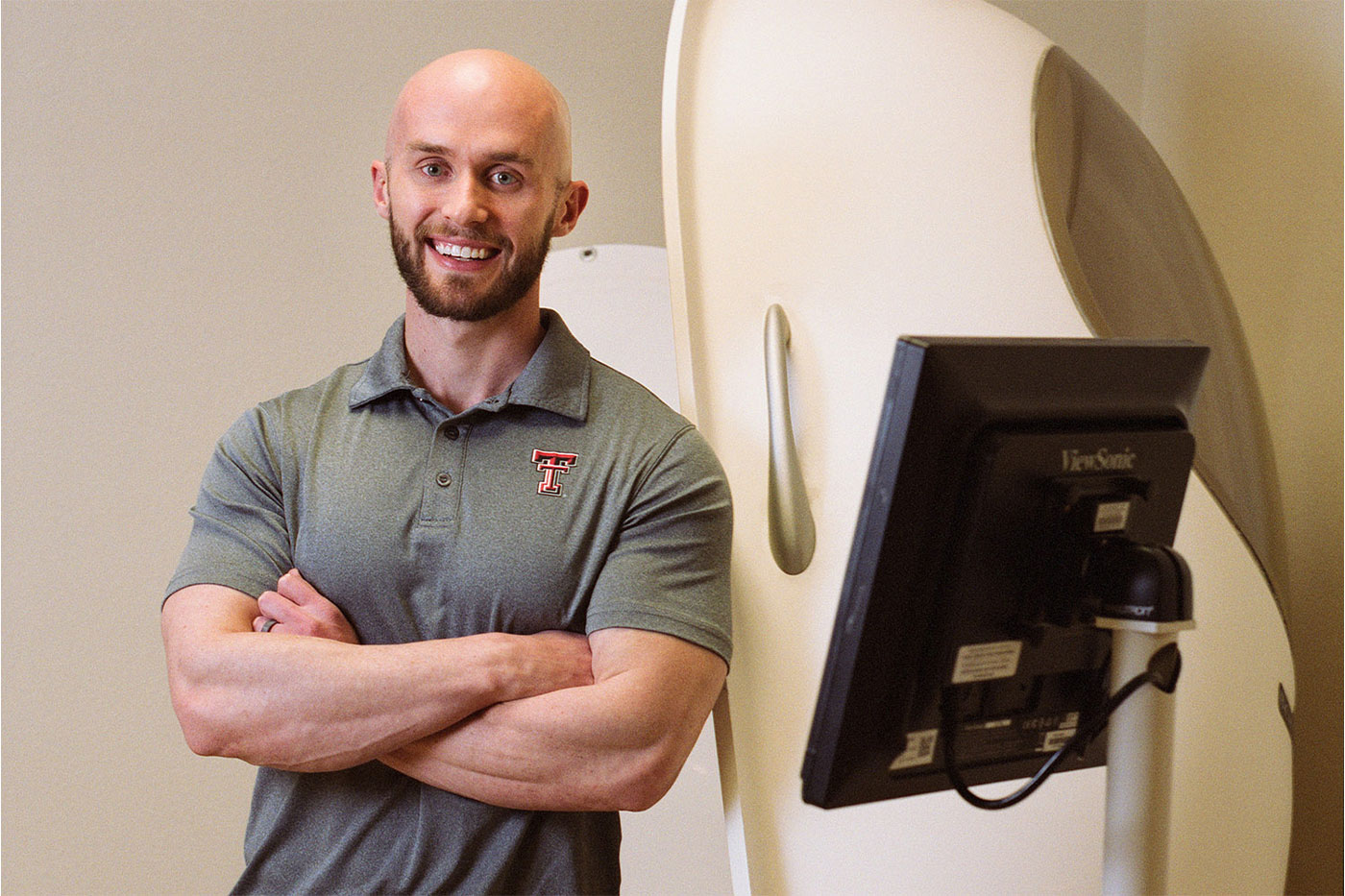
“I had some trepidation about the turnover, but she communicated her vision well,” said Tinsley. “I had a lot of confidence in her because she’d previously been a dean at the University of Kansas, so she had been in higher levels of administration and had a lot of experience in higher ed, and she instilled a lot of confidence that she knew what she was doing.”
What helped Tinsley early on was Lumpkin’s reduction of the extra, miscellaneous service requirements that came with faculty’s research and teaching commitments, as well as a course release that lessened his teaching load. That modification allowed him to devote more time to establishing his research program and acquiring the necessary equipment.
Another focus of Lumpkin’s has been developing her faculty’s teaching prowess.
She walked in the door with a love of teaching and a desire to elevate educators whom she already believed were proficient.
Upon arriving at Texas Tech, Lumpkin got involved with the Teaching, Learning & Professional Development Center, furthering her longtime interests in teaching effectiveness. She was also selected for the Texas Tech Teaching Academy in 2016.
Lumpkin held teaching workshops during her first few years as chair, focusing on active learning that puts students in a place to take partial responsibility for their development. Her emphasis on students interacting with their peers and the content they’re learning remains today.
“We’ve got the best technology on campus in our classrooms.”
“We just put upgraded display monitors up, we’ve bought rolling chairs, all out of our money, and now we have in our six classrooms a setup that facilitates moving around,” said Lumpkin.
When working with department faculty to develop a teaching plan, they emphasized the importance of professional development. The current plan also requires departmental course and instructor evaluations, the establishment of a teaching philosophy, and individual reflections.
Tinsley said the evaluations have been instrumental in evolving his teaching. With Lumpkin sitting in on many of the evaluations herself, given her knowledge of various strategies and emphasis on active learning, the feedback is especially meaningful.
“Several times I felt like I delivered my best lecture ever, and she was still very positive but had areas for improvement for us to continue to grow,” Tinsley said. “She definitely pushes that continual growth as teachers, whether it’s your first day in your job or you’ve been here almost a decade.”
These actions have resulted in assembling an intriguing roster of faculty, including many on the tenure track who have risen since being hired by Lumpkin, and professors of practice and lecturers who have been promoted because of the quality of their teaching.
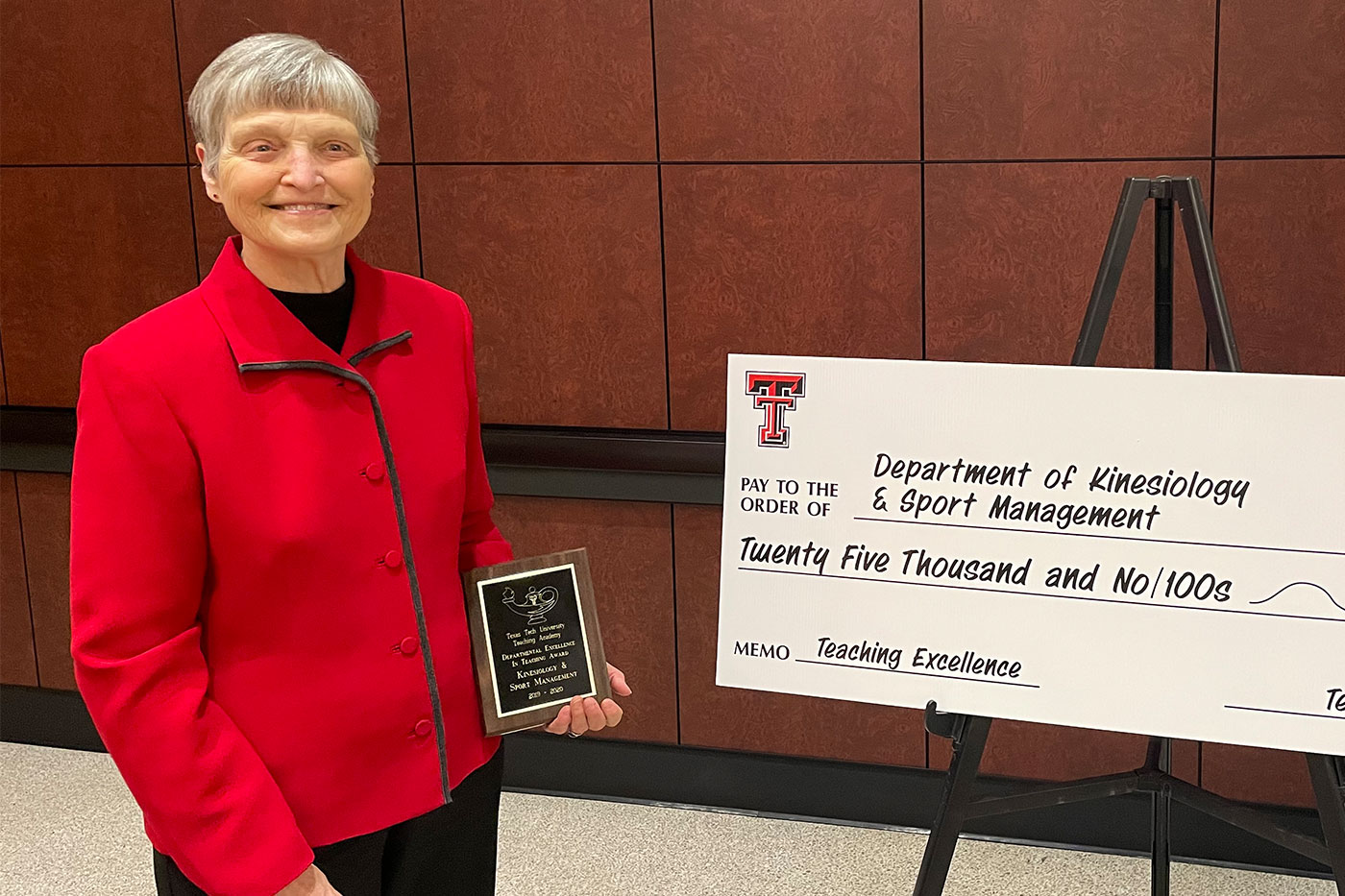
Kinesiology & Sport Management earned the 2019-2020 Department Excellence in Teaching Award from the Teaching Academy, and the Institutional Effectiveness Excellence Award in 2020 from Planning and Assessment.
“We have an excellent curriculum, we’re delivering the curriculum very well to our students, and we’re assessing their learning effectively,” said Lumpkin. “That’s what those awards mean.”
The emphasis on teaching continues with the department’s doctoral program in kinesiology, established in 2018. Doctoral students take a teaching class led by Lumpkin and are assigned a faculty member to mentor them and develop lab courses to teach the undergraduate kinesiology majors.
Over the last decade, the department’s focus on research activity has also increased exponentially.
The expectation for department faculty is that they conduct research and publish peer-reviewed articles, and kinesiology faculty are also expected to obtain external grants. Given that most faculty are assistant professors, the department’s average of four publications each year per faculty member is impressive.
Assistant professors Danielle Levitt and Hui Ying Luk’s recent accomplishment of receiving $3.5 million from the National Institutes of Health to study the effects of heat therapy on prediabetic adults is the latest example of the work faculty are doing to earn external grants.
Texas Tech’s support has contributed to raising the department’s research profile. While its current building had a few well-established laboratories when Lumpkin arrived, the department needed to build out and renovate to meet new research expectations.
Every kinesiology researcher has their own lab furnished with quality equipment, generous startup packages from the College of Arts & Sciences and support from Vice President for Research & Innovation Joe Heppert.
“What we’ve done is built labs that set faculty up for success.”
Quality faculty come to Texas Tech because they see their resources won’t be limited, added Gonzales. He also spoke about the level of grants faculty are earning, which include highly competitive ones from the American Heart Association and the U.S. Department of Defense.
When the university first earned the ‘Tier One’ Very High Research Activity designation from the Carnegie Classification of Institutions of Higher Education in 2015, an outside observer wouldn’t have looked at Kinesiology & Sport Management and thought the department’s activity aligned with the status.
Now, doctoral, graduate, and undergraduate students help faculty conduct research, and they also receive funding from the department to present the research they’re a part of at conferences and on campus elsewhere.
The establishment of a doctoral program was integral to creating a whole different feel around the department, according to Tinsley, who said the program has increased the quality and quantity of applicants for Kinesiology & Sport Management positions.
With all the research that’s being done throughout the department, Kinesiology & Sport Management has raised its profile externally through experts coming from the department to speak at conferences, on podcasts, and other platforms.
“It’s a great bidirectional relationship, where the College of Arts & Sciences provides us with support,” said Tinsley. “That allows us to succeed in each of our individual areas and collectively bring acclaim to Texas Tech.”
Morale within the faculty is sky-high.
Since so many have been hired in recent years, and so many are pre-tenured, the demographics of the faculty comprise people in a similar age group, many of whom are starting to build families. That contributes to a community feeling not only inside the facility but outside as well, Gonzales said.
Colleagues have a lot in common, and they’re all supported in ways that no one feels left out.
In addition to monthly meetings, Lumpkin hosts cookouts each August to kick off the new academic year. She also noted how remarkable it is that more children keep showing up with each event.
“That’s the future of your department showing up in their personal lives,” said Lumpkin.
The current state of the faculty excites her most about what’s to come.
She envisions them securing more grants and enhancing the department's profile to help Texas Tech achieve key benchmarks associated with AAU institutions, building on the foundation Lumpkin has established to position the department as an integral part of the campus.
Residing within a field that’s popular with students, the department has adjusted to raise standards set for students and still has nearly 1,800 undergraduates taking classes, a large number for faculty present. In 2016, the department raised the minimum grade-point average for undergraduate majors to remain in Kinesiology & Sport Management from 2.0 to 2.5. The minimum GPA was raised again to 2.75 in 2022.
The efforts have resulted in attracting a different kind of student to the department.
More science-based courses have drawn in students with career aspirations in medicine and research, Gonzales said. That means aspiring physical and occupational therapists, strength and conditioning coaches, and those who continue onto medical school.
Tinsley noted one of his first undergraduate students is now an orthopedic surgery resident at the Mayo Clinic, after earning a bachelor’s degree in kinesiology and subsequently enrolling in medical school.
"The students are getting a good learning environment, they’re engaging with what they’re doing, and they’re getting jobs when they go out,” said Lumpkin. “Whatever it is we’re doing, we’re doing it right.”
Gonzales wouldn’t have guessed in 2010 all that’s transpired in the years since.
Yet, 14 years later, he’s chosen to remain. Professors want to be in departments continuously improving in the facets of quality of life, research and teaching, he said, and in departments projected to rise in productivity, begetting continued support from the university.
As opposed to only being productive through self-motivation, Gonzales looks around and sees his colleagues firing on all cylinders.
“I’m in a department that I want to be in, because I know I’m going to be successful because of the people around me,” he said.
Though Tinsley initially felt pressure about having to obtain external research funding when he arrived at Texas Tech, he found an environment that wasn’t stressful. The institutional support has made him feel comfortable in his role while encouraging him to push for success, and the stability of Lumpkin as department chair also has helped.
“I’m just happy in my job,” Tinsley said.
The tangible progress seen since Lumpkin took over as chair is what she enjoys about being a leader. She finds pleasure in making a difference by fostering a better learning environment for students and helping faculty advance their careers.
It’s all a part of building a culture of success and advancement, one with staying power.
“I’ve always tried to do that in whatever leadership role I’ve been in,” said Lumpkin. “I like to think when I leave a particular situation, it’s better than the way I found it, and there’s a strong foundation upon which those after me can build.”

